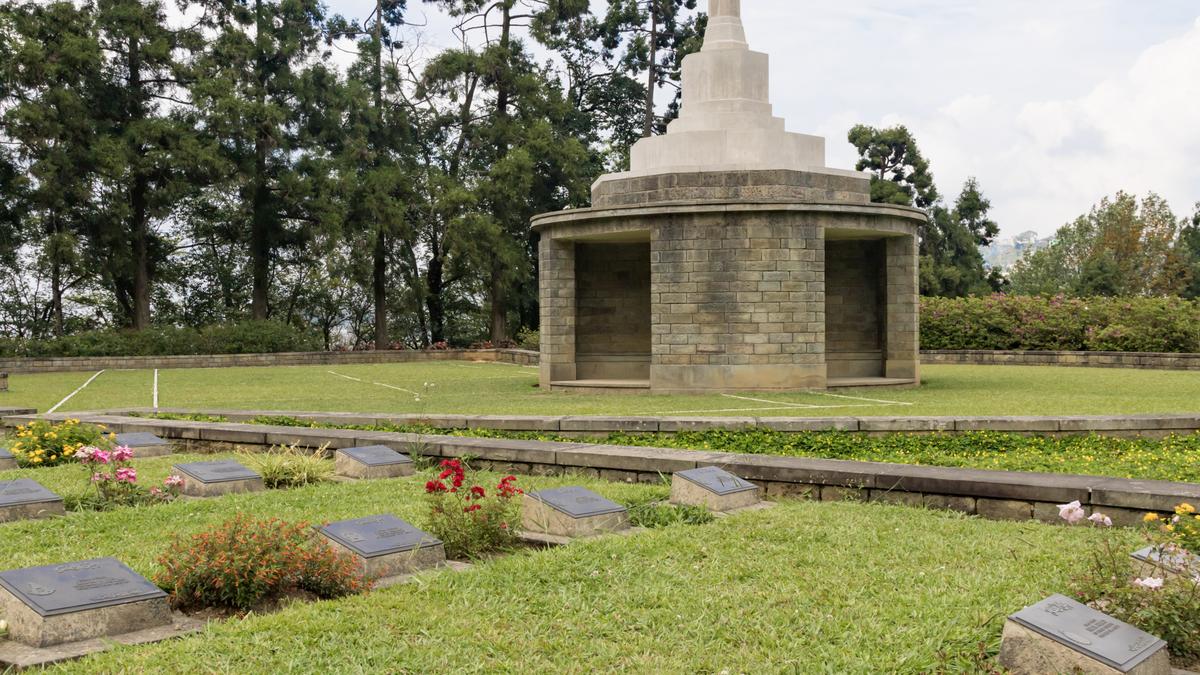
A walk to remember
The Hindu
UK’s Charlotte Carty retraces the journey of her grandfather and the men of the Assam regiment from Jessami to Kohima during World War II
In Kohima, once the outpost of the British Raj, the air is often swollen with rain. When the clouds lift, they unveil a blue-green baize of hills with forests of bamboo and clusters of orchid. Kohima War Cemetery, often revered, mostly forgotten, stands tucked away on the gentle rise of Garrison Hill — a place of both revulsion and courage. It was here, separated only by the few yards’ span of a tennis court, that the British, Indians and Japanese fought (Battle of the Tennis Court) in a Second World War battle so savage and heroic that it was voted Britain’s greatest ever. Row upon row of headstones — inscribed in English, and some in Devanagari and Arabic — mark the final resting place of 1,420 men of the Allied Forces. Under the burnt stubble of grass lie thousands of Japanese in mass graves, as birds sing from a cherry tree once used by snipers.
Among the fascinating stories to emerge, is the immutable link Kohima has with Charlotte Carty, a 54-year-old lawyer-turned-English tutor who lives thousands of miles away near Sherborne in the UK. Since childhood, Carty had been drawn to a book by her mother’s bedside that outlined the early history of the Assam Regiment, one of the few that held back Japanese forces at the epic defence of Kohima when Japan spearheaded into South-East Asia, Singapore, Malaya and Burma between 1942 and 1944.
“The book was about how the Assam Regiment was raised in 1941 by Colonel Ross Howman in Shillong, drawing troops from the Nagas, Khasis, Gurkhas and the Assamese, and in December that year, my maternal grandfather, Lieutenant Colonel WF ‘Bruno’ Brown, 44, took over as Commanding Officer. My mother, Mary, was Brown’s younger daughter and she was still very young when he withdrew with his troops from Jessami, fought at Kohima, and was killed by a Japanese sniper later in the war in Zigon, Burma,” says Carty, speaking from Kohima on the afternoon of April 4, after walking from Jessami, 80 years to the hour since the first shots of the Battle of Kohima were fired.
“As the Internet grew, I looked more closely for information and there wasn’t much I could find about the Assam Regiment. I did discover, however, that Brown had already served in the North-West Frontier and the Punjab before he headed East,” she adds.
1st Assam Battalion spent the first couple of years patrolling the jungles of undivided Assam and on garrison duty at the Digboi oil fields. By 1943, the Japanese 15th Army was waiting to cross the Chindwin about a hundred kilometres from Kohima. Brown and his men first left for Kohima in early February 1944, establishing defences at the villages of Jessami and Kharasom. In March, patrols brought news of Japanese invaders heading their way.
While the Battles of Imphal, Jessami and Kohima are well documented, the ultra-challenge that Brown and his men took to withdraw from Jessami to Kohima, scatter across the dense hills, then regroup and dig trenches with bare hands to fight at Kohima in a matter of 39 hours with the Japanese at their heels, is the stuff of legend.
“It wasn’t dinner table conversation at home; but this story remained with me. I thought the 80th anniversary was a good time to remember this incredible march and given that we are losing our World War veterans – a 102-year-old Indian veteran who had fought with my grandfather at Jessami died on March 31 – there is an urgency to commemorate it. Those who fought in the Far East theatre did not receive the attention that those who fought in European campaigns received. I like to beat the drum about it because it has a personal connection,” says Carty.

NDA government in A.P. neglecting students and education sector badly hit, alleges Jagan Mohan Reddy
YSR Congress Party (YSRCP) president Y.S. Jagan Mohan Reddy has criticised the National Democratic Alliance (NDA) government in Andhra Pradesh, accusing it of neglecting all sectors and not paying the fee reimbursement benefits to the students.










